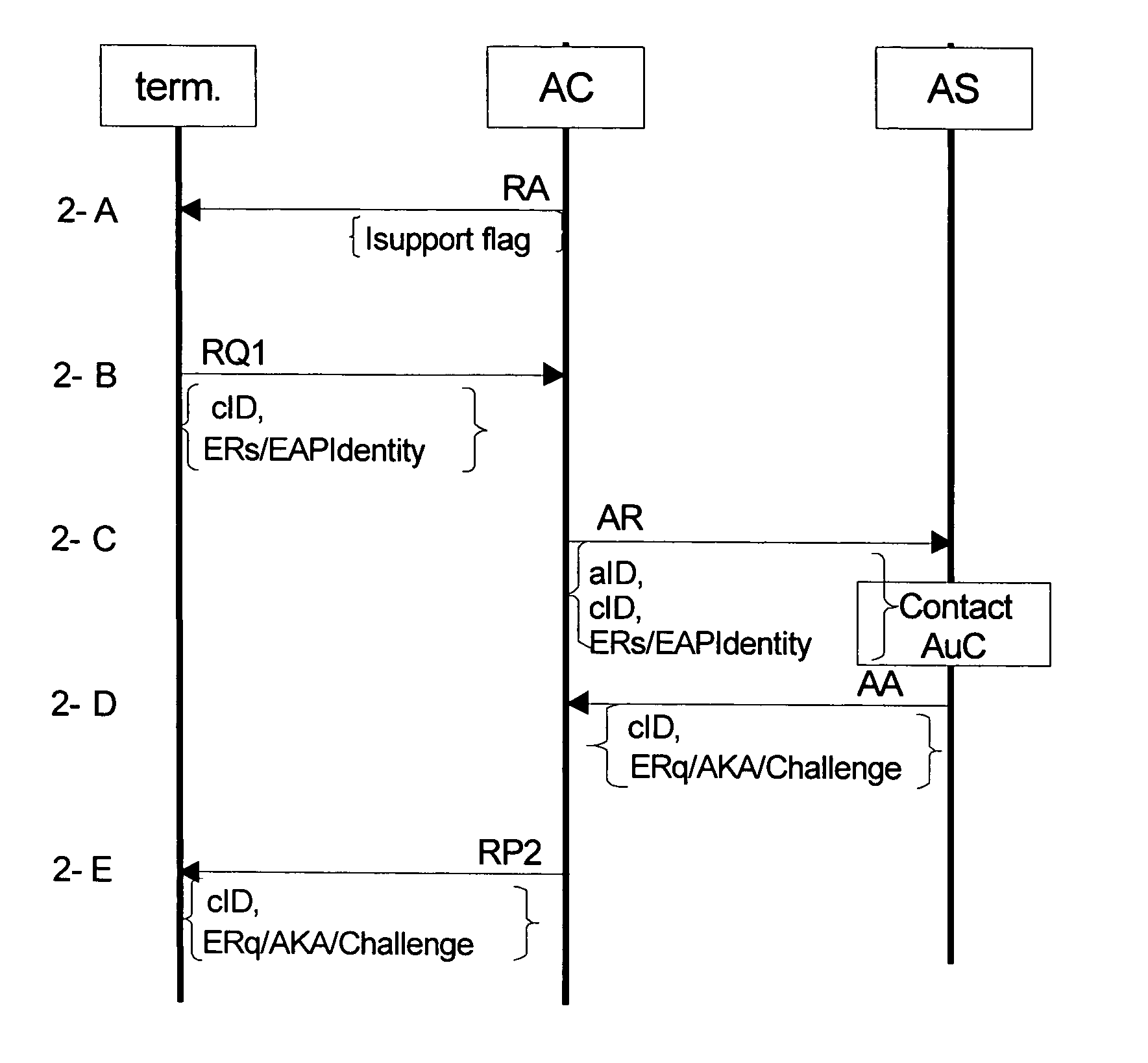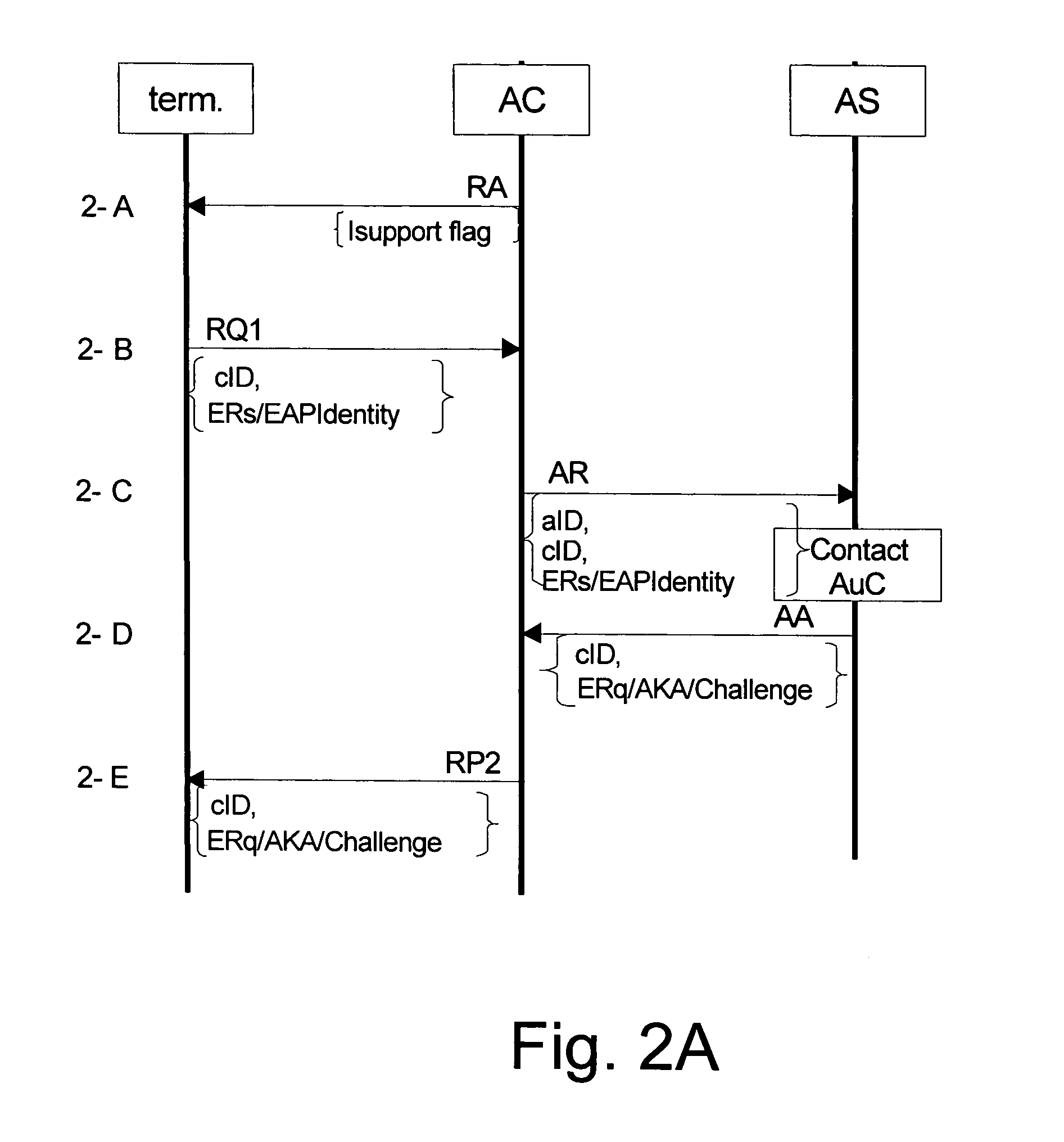Authentication in heterogeneous IP networks
a heterogeneous ip network and authentication technology, applied in the field of authentication in heterogeneous ip networks, can solve the problems of difficult gaining access to sessions, and achieve the effect of reducing traffic load on the network and simplifying the authentication procedur
- Summary
- Abstract
- Description
- Claims
- Application Information
AI Technical Summary
Benefits of technology
Problems solved by technology
Method used
Image
Examples
first embodiment
[0057] A first embodiment relates to a combined use of CDMA2000 cellular and non-cellular packet data networks, and specifically relates to user authentication and the authorization of services using a Universal Subscriber Identity Module (USIM) when communicating over multiple types of access networks using the EAP-AKA specification. This capability is useful for automating key management leveraging on existing key infrastructure for non-data authentications, as has been shown with similar methods in other cellular environments. Authenticating the user and authorizing service allows the cellular operator to provide the user various access network types, while maintaining a unified service provisioning, user-based network access management, and roaming authorization, while leveraging all this from existing authentication / accounting / billing infrastructure. The benefit can be summarized as unification of smartcard-based CDMA2000 authentication for multiple access methods.
[0058] The em...
second embodiment
[0142] In the following, the present invention is described.
[0143] Similar to the first embodiment, the second embodiment is directed to the field of combined use of CDMA2000 cellular and non-cellular packet data networks, and specifically relates to user authentication and the authorization of services using a Removable User Identity Module (R-UIM) when communicating over multiple types of access networks. While no protocols currently exist to do R-UIM authentication over non-cellular IP networks, this capability is useful for automating key management leveraging on existing key infrastructure for non-data authentications, as has been shown with similar methods in other cellular environments. Authenticating the user and authorizing service allows the cellular operator to provide the user various access network types, while maintaining a unified service provisioning, user-based network access management, and roaming authorization, while leveraging all this from existing authenticati...
PUM
 Login to View More
Login to View More Abstract
Description
Claims
Application Information
 Login to View More
Login to View More - R&D
- Intellectual Property
- Life Sciences
- Materials
- Tech Scout
- Unparalleled Data Quality
- Higher Quality Content
- 60% Fewer Hallucinations
Browse by: Latest US Patents, China's latest patents, Technical Efficacy Thesaurus, Application Domain, Technology Topic, Popular Technical Reports.
© 2025 PatSnap. All rights reserved.Legal|Privacy policy|Modern Slavery Act Transparency Statement|Sitemap|About US| Contact US: help@patsnap.com



